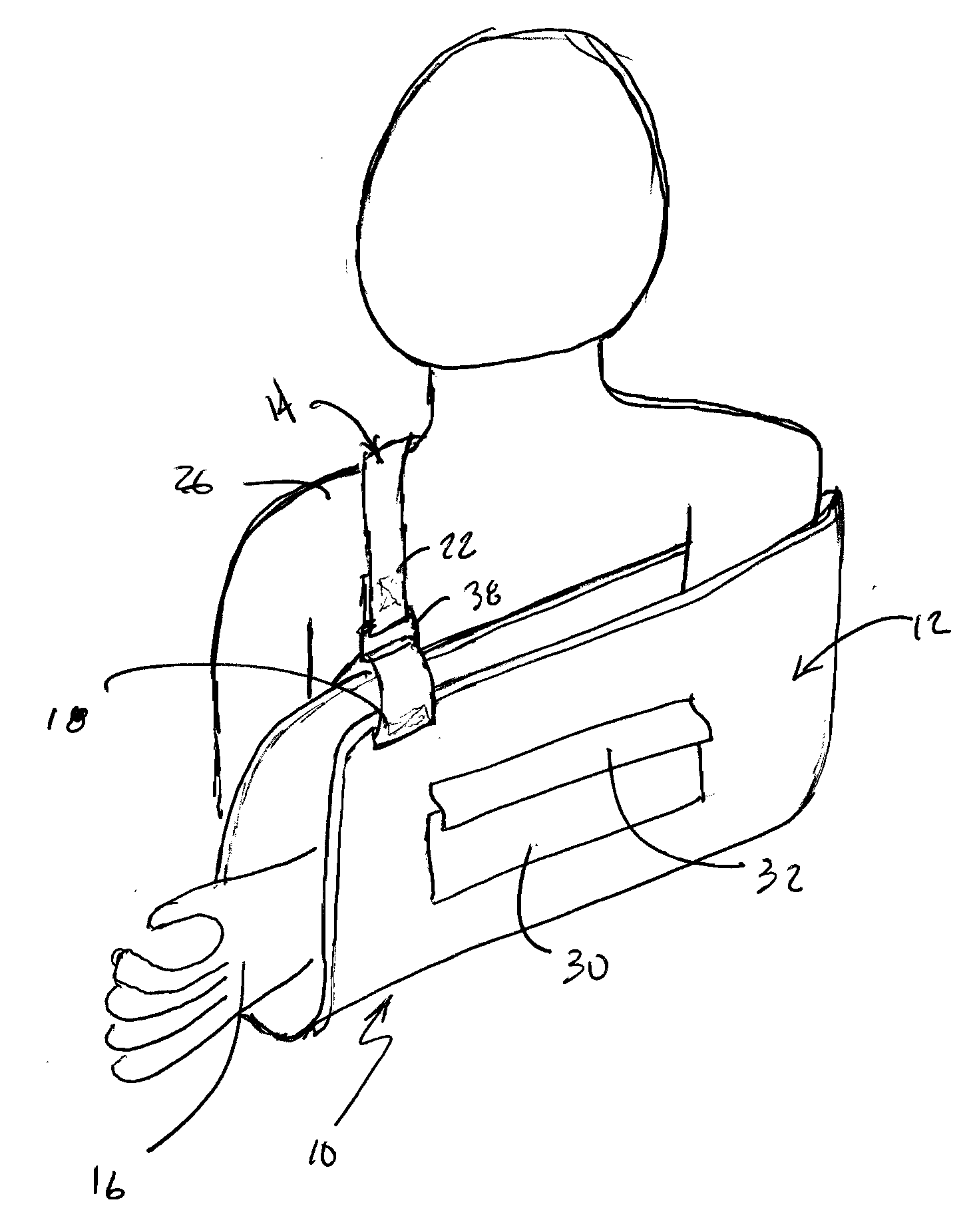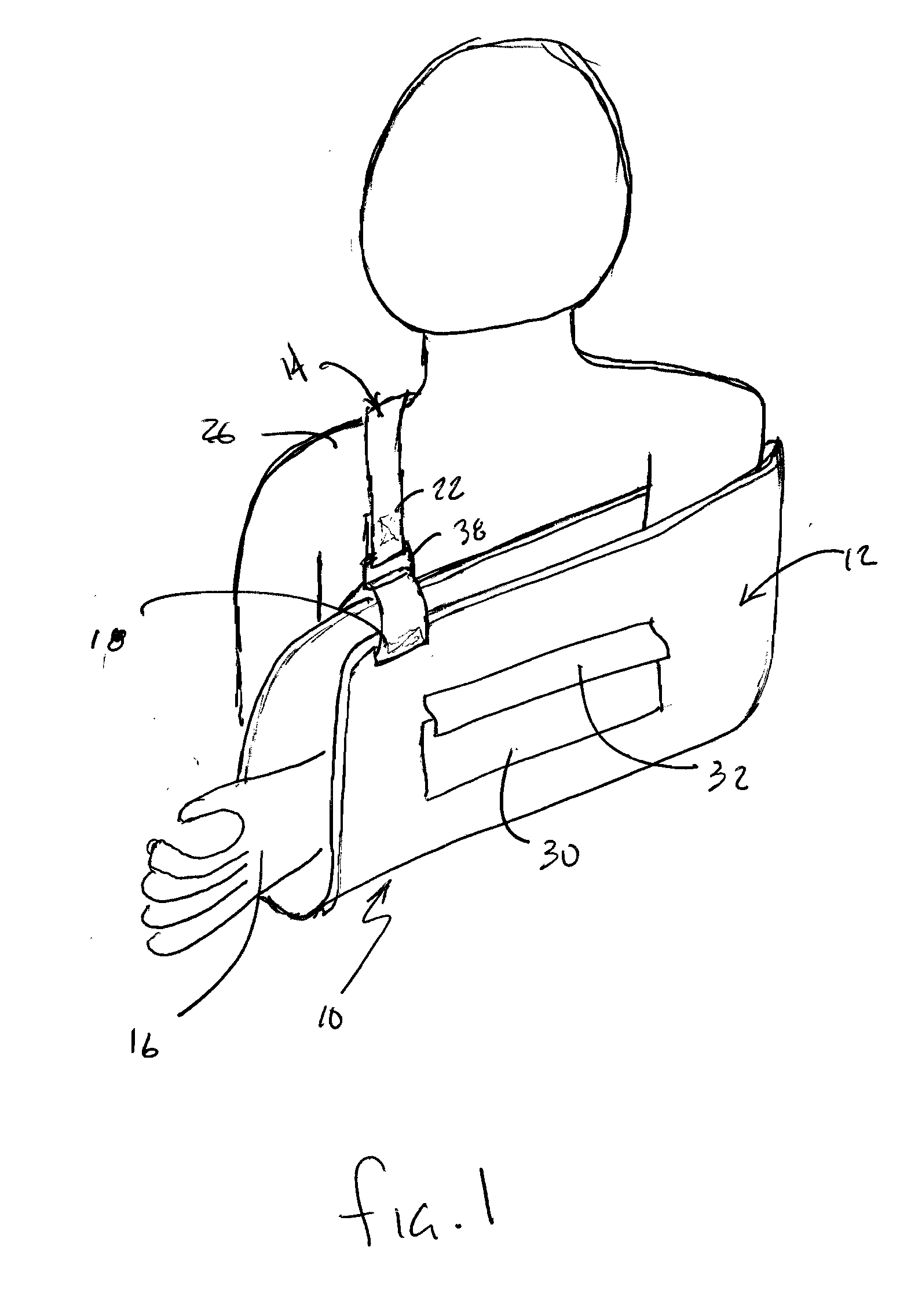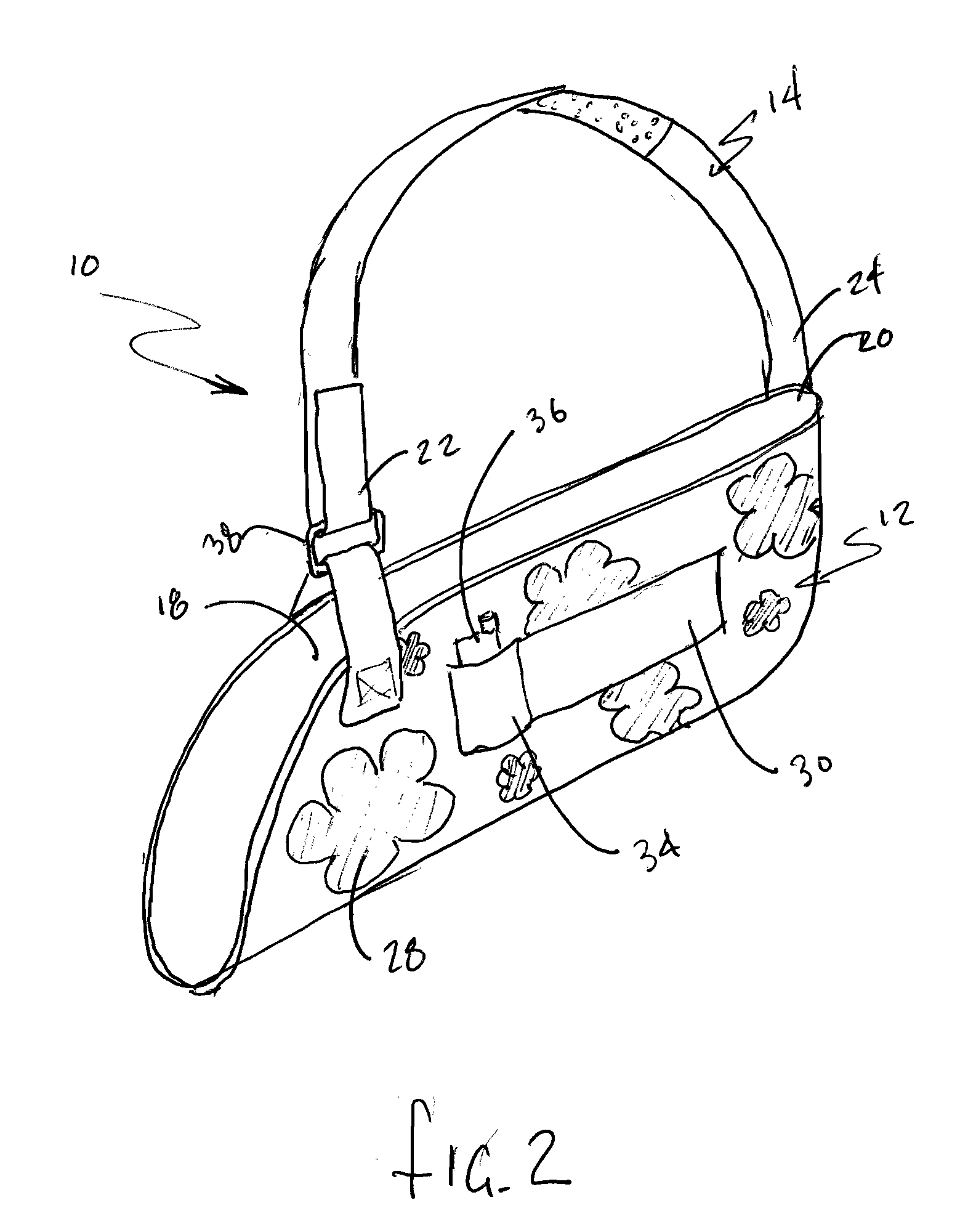Sling design
a sling and design technology, applied in the field of sling assembly, can solve the problems of complex treatment of the shoulder, difficult shoulder, and well-known disadvantages of rigid casts, and achieve the effects of preventing strap bunching and creeping, improving the performance and appearance of the sling, and more uniformity
- Summary
- Abstract
- Description
- Claims
- Application Information
AI Technical Summary
Benefits of technology
Problems solved by technology
Method used
Image
Examples
Embodiment Construction
[0021]Now referring to the drawings, the sling assembly 10 including the sling pouch 12 and support strap 14 are shown and generally illustrated in FIGS. 1 and 2. The sling assembly 10 can be seen to generally include a sling pouch 12 and a sling support strap 14 that is affixed to the sling pouch 12. The sling pouch 12 is configured to receive the wearer's arm 16 in a substantially fixed position and includes first 18 and second 20 attachment points to which first 22 and second 24 ends of the support strap 14 are affixed. The support strap 14 extends upwardly from one of the attachment points 20 on the sling pouch 12, around the wearer's back, across their neck, over one of the wearer's shoulders 26 and back to the other attachment point 18 on the sling pouch 12. In this manner, the support strap 14 and sling pouch 12 cooperate to receive and support the wearer's arm 16 from a support surface on a wearer's body, such as for example the wearer's shoulder 26.
[0022]The sling pouch 12 ...
PUM
 Login to View More
Login to View More Abstract
Description
Claims
Application Information
 Login to View More
Login to View More - R&D
- Intellectual Property
- Life Sciences
- Materials
- Tech Scout
- Unparalleled Data Quality
- Higher Quality Content
- 60% Fewer Hallucinations
Browse by: Latest US Patents, China's latest patents, Technical Efficacy Thesaurus, Application Domain, Technology Topic, Popular Technical Reports.
© 2025 PatSnap. All rights reserved.Legal|Privacy policy|Modern Slavery Act Transparency Statement|Sitemap|About US| Contact US: help@patsnap.com



